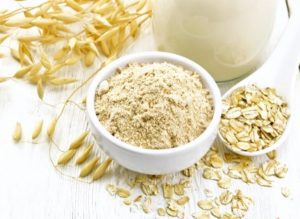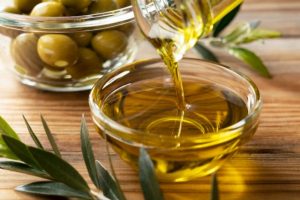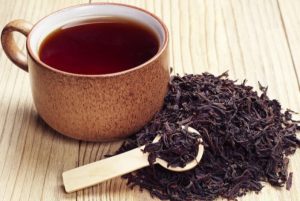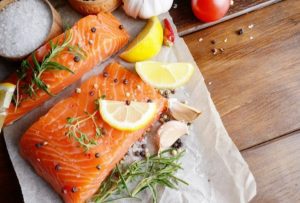Say goodbye to health problems with our expert-recommended home remedies. Unlock the secrets of holistic healing and experience a healthier, happier you. Start your journey to wellness today!
Are you looking for natural and effective ways to stay healthy? You don’t have to go far! In this article, we’ve compiled a list of 9 home remedies that can keep you in good health. From dry, itchy skin to joint pain, we’ve got you covered!
1. For Dry, Itchy Skin: Take an Oatmeal Bath

Dry, itchy skin can be a nuisance, but an oatmeal bath can help soothe and moisturize your skin. Oats contain compounds that have anti-inflammatory and antioxidant properties, which can help reduce inflammation and irritation.
To take an oatmeal bath, simply grind a cup of plain, uncooked oatmeal into a fine powder and add it to your bathwater. Soak in the tub for 15-20 minutes and rinse off with lukewarm water.
2. For Constipation: Drink Some Olive Oil

Constipation is a common problem that affects many people. Olive oil can help relieve constipation by lubricating the digestive system and promoting bowel movements.
To use olive oil for constipation, simply take a tablespoon of extra-virgin olive oil on an empty stomach in the morning. You can also mix it with a little lemon juice for added flavor.
3. For Canker Sores: Swish a Bit of Honey
Canker sores are small, painful ulcers that can develop inside your mouth. Honey has natural antibacterial properties that can help reduce inflammation and promote healing.
To use honey for canker sores, simply swish a bit of honey around in your mouth for a few minutes and spit it out. You can also apply honey directly to the sore with a cotton swab.
4. For Heartburn: Change Your Sleep Position
Heartburn is a burning sensation in the chest that occurs when stomach acid flows back up into the esophagus. Changing your sleep position can help reduce the risk of acid reflux and heartburn.
To reduce the risk of heartburn while sleeping, try elevating the head of your bed by 6-8 inches. You can also try sleeping on your left side, which can help prevent stomach acid from flowing back up into your esophagus.
5. For Smelly Feet: Soak in Black Tea

If you suffer from smelly feet, black tea can help neutralize odor-causing bacteria. Black tea contains tannic acid, which has astringent properties that can help reduce sweat production.
To use black tea for smelly feet, simply brew a few tea bags in a pot of boiling water and let it cool. Soak your feet in the tea for 15-20 minutes and rinse them off with cool water.
6. For Warts: Soak in Hot Water
Warts are small, rough growths that can appear on your skin. Soaking warts in hot water can help soften the skin and make it easier to remove them.
To use hot water for warts, simply soak the affected area in hot water for 15-20 minutes. You can also add a cup of Epsom salt to the water for added benefits.
7. For Migraines: Eat Fatty Fish

Migraines are a type of headache that can cause intense pain and discomfort. Fatty fish such as salmon, mackerel, and sardines contain omega-3 fatty acids, which have anti-inflammatory properties that can help reduce migraine symptoms.
To use fatty fish for migraines, try to eat at least two servings per week. You can also take omega-3 supplements if you’re not a fan of fish.
8. For hiccups: Drink with suction
Hiccups are involuntary spasms of the diaphragm muscle below the lungs. Many people have their tricks to stop hiccups, like holding their breath or drinking water, but these remedies are not always successful. Dr. Ali Seifi, an associate professor and neurosurgeon at the University of Texas Health Science Center at San Antonio, has developed a new solution that requires more suction than a regular straw to contract the diaphragm muscle and activate the phrenic and vagus nerves. He called it the HiccAway. This article will discuss Seifi’s solution and how it works.
What are hiccups?
Hiccups are involuntary spasms of the diaphragm muscle that cause a sudden inhalation (involuntary gasping) that is followed by a rapid closure of the glottis (the opening between the vocal cords). The glottis is responsible for preventing food and liquids from entering the airway during swallowing. Hiccups can be caused by various factors, such as eating too fast, drinking carbonated beverages, consuming alcohol, smoking, or sudden changes in temperature.
Why are hiccup remedies hit-and-miss?
Drinking water, holding the breath, or other remedies that aim to activate the phrenic and vagus nerves have a scientific basis. The phrenic nerve regulates the diaphragm muscle, and the vagus nerve regulates the epiglottis, which is responsible for preventing food and liquids from entering the airway during swallowing. However, these home remedies are often hit-and-miss because they do not provide enough suction to contract the diaphragm muscle for a more extended period.
What is the HiccAway?
The HiccAway is a special straw that requires five times the suction compared to a regular straw. This increased suction creates more prolonged contraction of the diaphragm muscle, which triggers a longer duration of nerve activation. The pressure from the suction, coupled with swallowing to activate the phrenic and vagus nerves, “resets” the brain, and stops hiccups.
How effective is the HiccAway?
According to a 2021 study, over 90% of participants said the HiccAway stopped their hiccups when they tried it. The HiccAway’s increased suction allows for a longer contraction of the diaphragm muscle, which stimulates nerve activation and stops hiccups.
Can you make a home version of the HiccAway?
Dr. Ali Seifi suggests filling a glass with water and stretching a coffee filter (or layers of paper towel) over the top. Hold it tightly in place or secure it with a rubber band, then tip the glass toward your mouth and apply as much suction as it takes to drink the water. The physics may not be as precise as those of the special straw, but it works.
Other remedies for hiccups
Aside from the HiccAway and suction, other remedies for hiccups include:
- Breathing into a paper bag
- Drinking water slowly while plugging your ears
- Swallowing a teaspoon of sugar
- Pulling your knees up to your chest and leaning forward
- Gargling with ice water
Conclusion
Hiccups are involuntary spasms of the diaphragm muscle that can be annoying and uncomfortable. While many remedies exist to cure hiccups, they are often hit-and-miss. Dr. Ali Seifi’s HiccAway provides a new solution that requires more suction than a regular straw to contract the diaphragm muscle and activate the phrenic and vagus nerves. The HiccAway has been shown to be effective in stopping
9.For Joint Pain: Go on a Brisk Walk
Joint pain can be debilitating, and it can be tempting to rest and avoid any activity that exacerbates the pain. However, research has shown that going for a brisk walk can actually help alleviate joint pain, specifically in people with arthritis. In this article, we’ll explore the benefits of brisk walking for joint pain and provide some tips on how to get started.
The Benefits of Brisk Walking for Joint Pain
Reduced Risk of Mobility Problems
According to a 2019 study by researchers at Northwestern University in Chicago, people who engage in brisk walking for an hour each week are 85% less likely to develop mobility problems as a result of their arthritis. This is a significant finding, as mobility problems can severely impact a person’s quality of life.
Protective Effect on Cartilage Cells
Contrary to popular belief, the mechanical pressure that occurs during brisk walking can actually have a protective effect on cartilage cells. Bioengineers at Queen Mary University of London found that this type of pressure stimulates cartilage cells to produce molecules that protect against inflammation and damage.
Improved Joint Health
Regular brisk walking can also help improve joint health by increasing blood flow to the joints and improving joint flexibility. This can lead to a reduction in joint pain and stiffness, as well as an increase in overall mobility and function.
How to Get Started with Brisk Walking
If you’re new to brisk walking, it’s important to start slowly and gradually build up your endurance. Here are some tips to help you get started:
Consult with Your Doctor
Before starting any new exercise program, it’s important to consult with your doctor to ensure that it’s safe for you to do so. This is especially important if you have any underlying health conditions or are taking any medications that may affect your ability to exercise.
Invest in Good Walking Shoes
Investing in a good pair of walking shoes can help prevent injuries and make your walks more comfortable. Look for shoes that provide good support and cushioning, and make sure they fit well.
Start Slowly
Begin by walking for just a few minutes at a time, and gradually increase the duration and intensity of your walks as you feel comfortable. Aim for at least 30 minutes of brisk walking most days of the week.
Incorporate Strength Training
In addition to brisk walking, it’s also important to incorporate strength training exercises that target the muscles surrounding your joints. This can help improve joint stability and reduce the risk of injury.
Stay Hydrated
Drink plenty of water before, during, and after your walks to help prevent dehydration and keep your joints lubricated.
Conclusion
Brisk walking is a simple and effective way to alleviate joint pain and improve overall joint health. By incorporating regular brisk walks into your routine, you can reduce the risk of mobility problems and protect against inflammation and damage to your cartilage cells. So lace up your walking shoes and hit the pavement – your joints will thank you!
FAQs
- Is brisk walking safe for everyone? While brisk walking is generally safe for most people, it’s important to consult with your doctor before starting any new exercise program, especially if you have underlying health conditions.
- Can brisk walking cause more damage to my joints? No, brisk walking can actually have a protective effect on cartilage cells and improve joint health.
- How often should I go for a brisk walk? Aim for at least 30 minutes of brisk walking most days of the week.
- Can I combine brisk walking with other forms of exercise? Yes, it’s important to incorporate a variety of exercises into your routine, including strength training exercises that target the muscles surrounding your joints.
- Will I see results right away? While you may not see results right away